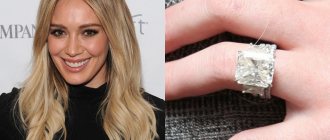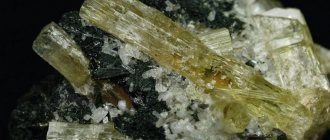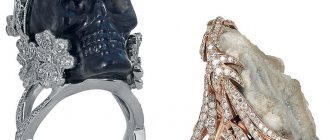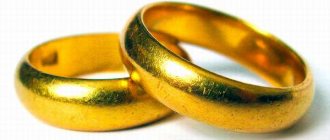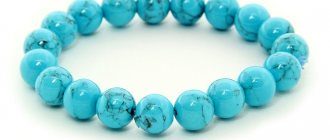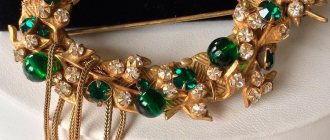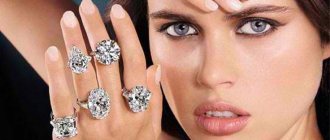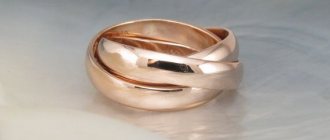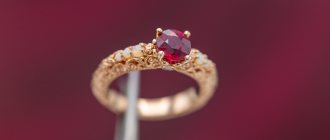Rose cut
Rose cut
It is a facet cut without a platform and a lower part. Depending on the number and shape of the facets, there are varieties - Dutch rose, Antwerp rose, half-Dutch rose, double Dutch rose and others.
The base of the stone in this case is flat, and the crown consists of triangular faces, usually 12 or 24, arranged symmetrically. As a rule, the stone has a round shape. The exceptions are the briolette, Antwerp rose and double Dutch rose cut types.
The rose cut is the first cut to use flat facets. The name of this form is explained by the similarity of the arrangement of facets in the stone with the petals of a well-developed rose. This cut was widely used until the 17th century, but is now rarely used, mainly when processing small fragments of stones; in the Victorian era it was used to cut dark red garnets, which were very fashionable at the time.
Rose-cut stones have facets only in the upper part, and the lower part is a flat ground base. The upper part is shaped like a pyramid with triangular facets meeting at an angle at the top of the stone. The simplest forms of rose cutting are the Atwerp or Brabant rose. In these forms, the facets are arranged in two groups with a number of facets that are a multiple of 6: the first group of six facets forms the crown or star, the second group will form the lower part of the stone. Other varieties of rose cut are also known, these include: Dutch or royal full rosette (rose), Dutch half rosette, cross rosette, recoupee and others. An example of the largest diamond rose is the Great Mogul diamond.
In Dutch and royal roses, the height of the facet pyramid is half the diameter of the stone, the distance of the crown from the base is 3/5 of the full height of the stone, the diameter is about 3/4 of the base, which can be round or oval. In Atwerp and Brabant roses the faceted pyramids are lower; the number and shape of the facets of the lower part of the stone changes. The cross rose and recoupee differ in the shape of the facets. For example, the crowns of the recoupee rose form triangular facets, and the cross rose - quadrangular and diamond-shaped. The lower parts of the crown are also constructed differently. If the shape is double, which can be described as two simple shapes connected at the base, a beautiful briolette in the shape of an elongated drop is obtained. In addition, other forms of rose cutting are known.
The “Phantom of the Rose”, the largest pink diamond mined in Russia, went under the hammer in Geneva
A unique pink diamond, cut from a diamond mined three years ago in Yakutia, was sold in Geneva. The gem, dubbed the “Phantom of the Rose,” was auctioned at Sotheby’s for 24 million Swiss francs ($26 million) – the buyer who made the purchase over the phone remained unknown, Interfax reports.
close
100%
Denis Balibouse/Reuters
The gem, found in 2021 at the Ebelyakh deposit, weighed 27.85 carats - it turned out to be the largest pink diamond mined in Russia. After cutting in Russia, the oval diamond weighed 14.83 carats. Size, however, is not its only advantage.
The Rose Ghost, a deep purple-pink diamond, also features a clarity and clarity unique among colored diamonds. It was classified as “internally flawless”, and the shade was classified as one of the fantasy shades - Fancy Vivid.
“Only 1% of all pink diamonds are larger than 10 carats, and only 4% of all pink diamonds are graded Fancy Vivid and have a rich, vibrant color,” Gary Schuler, head of Sotheby's jewelry department, said at a press conference before the auction. “So to be able to offer a large cut pink diamond with the richness of color and clarity of the Rose Specter is extraordinary.”
close
100%
Denis Balibouse/Reuters
The lot was valued at 21 to 35 million Swiss francs ($23 to $38 million) - its final price was closer to the lower limit of the amount the auction house expected to earn.
“The Phantom of the Rose” received its name in honor of the one-act ballet staged by the choreographer of Sergei Diaghilev’s “Russian Seasons” troupe, Mikhail Fokin. In 1911, this ballet, based on Théophile Gautier's poem "The Vision of a Rose" to the music of Carl Maria von Weber, became the most popular of all productions of the Russian Seasons in Paris. His success was brought to him by the dancers Tamara Karsavina and Vaslav Nijinsky, whose extraordinary jumps made the spectators faint (as the author of Nijinsky’s biography, Guillaume de Sarde, writes). The dancer himself, jumping out of the window on stage in the finale, fell from exhaustion behind the scenes.
Alrosa itself put the “Ghost of the Rose” diamond up for sale in February 2021.
“It’s too early to talk about the price, but it’s obvious to me that this will be the most expensive diamond in the entire history of not only Alrosa, but in the entire history of diamond mining in the Soviet Union and, subsequently, in Russia,” the deputy general director told reporters at the time "Alrosa" Yuri Okoemov. It was assumed that the cost of "Phantom of the Rose" would be between $1 million and $2.5 million per carat.
At that time, the collection presented by Alrosa included a total of 40 stones, of which three were the rarest. In addition to the “Ghost of the Rose,” it was also a rich yellow diamond weighing 20.69 carats (it was cut from a rare honey-yellow diamond weighing 34.17 carats, which became the largest yellow diamond mined in Russia in 2021). The third unusual gemstone was an 11.06 carat purple-pink cushion.
Characteristics
The "Rose" has a dome-shaped top covered with triangular edges. The drawing can be of varying degrees of complexity. In the simplest version, it is formed by only three faces; in more complex ones, the number of faces can reach 24.
"Rose" is a cut that does not have a pavilion. Its back is flat. The shape of the stone can be any: most often it is round, but it can also be oval, pear-shaped, or rectangular.
Flaws
The disadvantages of "Rose" are the same as the advantages. It shows less bright shine and play of light, and attracts almost no attention. Critics of this cut say it makes the diamond look like regular glass.
A small number of edges makes the natural imperfections of the stone more noticeable. If there are stains, cracks or other types of inclusions, they will be clearly visible.
How did the cut appear?
"Rose" was invented in the 16th century. At that time, technology for processing precious stones was poorly developed: all operations, including weighing and measuring, were carried out manually. Natural diamonds were subject to only minor alterations and polishing before being set into jewelry, and the Rose was perfect for this purpose.
In 1725, a real revolution occurred in the precious stones market: large diamond deposits were discovered in Brazil. This led to a sharp drop in prices. The stones became accessible and desirable - the entire European aristocracy wore them.
Nothing sparkled better in the candlelight than rose diamonds. Some researchers believe that the popularity of this type of cutting has waned due to widespread electrification. When humanity switched from the dim light of candles to incandescent lamps, it turned out that Rose diamonds did not shine so brightly.
The development of new cutting methods also played a role. As more modern stone processing technologies became available by the 19th century, the Rose's popularity waned. Currently it is rarely used.
Precious flowers - symbols of famous jewelry houses
The unique Mademoiselle had her own favorite flower. The Camélia collection was dedicated to him, which included luxurious, feminine and elegant in its simplicity rings, earrings, necklaces and bracelets. Gabrielle herself said that she was impressed by the impeccable roundness of the flower and the uniform distribution of the petals, which for her are the embodiment of absolute beauty. Black onyx, white agate, gold and diamonds are used in the jewelry in various combinations; there are no bright gems or bright colors here, but do not rush to call them modest. Camellia was once considered the main flower of courtesans, actresses and ladies of the demimonde, who at one time played a significant role at the court of the French Emperor Napoleon III. Surely the revolutionary Mademoiselle knew this very well.
Chanel Jewelry Camellias from the collection of the same name
The history of the Jewelry House goes back 235 years, during which time a fairly large number of floral-themed jewelry was produced. But a separate collection with floral notes called “Hydrangea” was released in 2013. It is dedicated to the miniature and delicate flower of the same name, which owes its name to Josephine’s daughter, Hortense de Beauharnais. Like her mother, Hortense was one of the muses and main customers of jewelry from the Chaumet jewelry house. The collection included 24 pieces of high jewelry, divided into three color ensembles, marking the three stages of Hortense de Beauharnais’s life: pink - blossoming, deep red - deep feelings, blue - emotions that the young lady had to keep in the strictest confidence.
Jewelry roses can be found in whole bouquets and gardens in Dior boutiques, because more than one collection is dedicated to them - this is a tribute to Christian Dior’s favorite flower. The morning aroma of the rose garden can turn anyone's head, sometimes even surpassing the “society roses” (ladies wearing Haute Couture dresses for the ball)! So in the name of the Rose Dior Pré Catelan collection lies the name of the famous rose garden of the Paris Botanical Garden, and in Rose Dior Bagatelle - the name of the richest rose garden of Bagatelle Park in Paris. And the Le Bal des Roses collection consists of 12 unique floral decorations in the shape of roses, each of which, like a beautiful lady, is individual and unique.
Dior Jewelry Roses
The first Van Cleef & Arpels jewelry store appeared in 1896 thanks to the efforts of Alfred Van Cleef and the two Arpels brothers (Charles and Julien). The history of this Jewelry House is often called a love story, because Alfred married the sister of the Arpels brothers, which was the reason for joining professional efforts. The main source of inspiration for Van Cleef&Arpels has always been the enchanting beauty of nature. Thus, in 1968, the House first released jewelry with a decorative element in the form of Alhambra clover. The quatrefoil combined the beauty of a natural form with a symbol of good luck and perfectly reflected the philosophy of the house. It “took root” in Van Cleef&Arpels collections for many years, and was embodied in necklaces, bracelets, rings and earrings made of gold or with various gems and mother-of-pearl.
The “romance” between this flower and the Jewelry House began in 1979. Then Yves Piaget had the honor of creating a rose from 18-karat gold in his workshops - a prize that was awarded to the winners of the Geneva competition for breeding new varieties of this noble flower. In 2012, a whole collection of precious roses was presented called Piaget Rose, and two years later - a high jewelry collection called Rose Passion, which included 75 jewelry and 25 watches. To transform the roses, sapphires, colorful tourmalines, juicy emeralds and languid topazes, rubellites and chrysoprase, green chalcedony and pink opal were used.
As you can see, imitating nature and surpassing it in jewelry craftsmanship is the desire of every Jewelry House, but they all cope with this task in their own way.
Roses from Piaget
How many faces do diamonds have?
Oval cut
Anyone who has ever looked at a diamond has wondered how many facets a diamond has. The archives preserve the date of 1465, when a diamond was cut into 24 facets for the first time in Burgundy. Until this time, gems were only ground and polished. At the beginning of the last century, the mathematician Tolkovsky calculated the optimal number and shape of edges when a ray, refracted inside the stone, creates a rainbow shine. This tag of 57 sides was called “Russian”; its structure became classic.
Advantages
"Rose" is not like any of the modern cuts. It gives the stone a special warmth inherent in vintage products. An engagement ring with such a diamond will look as if it has many years of history.
The cut is valued for the following advantages:
- Makes the stone larger. The effect is due to the fact that “Rose” does not have a pavilion, which means it is all visible. If you compare this cut with a diamond cut, the diameter of the stone will be almost twice as large.
- Does not protrude beyond the edges of the frame. The absence of a pavilion makes the stone flat. This means that it does not cling to clothes and does not interfere with everyday life.
- Doesn't catch your eye. Due to its flat shape, a rose-cut diamond does not exhibit the expressive play of light. If you want a stone with a soft, slightly subdued shine, this is the option for you.
"Rose" is a rare cut. According to statistics, only one in 1,000 diamonds sold today is treated in this way. Any decoration with it will be unusual and unique.
